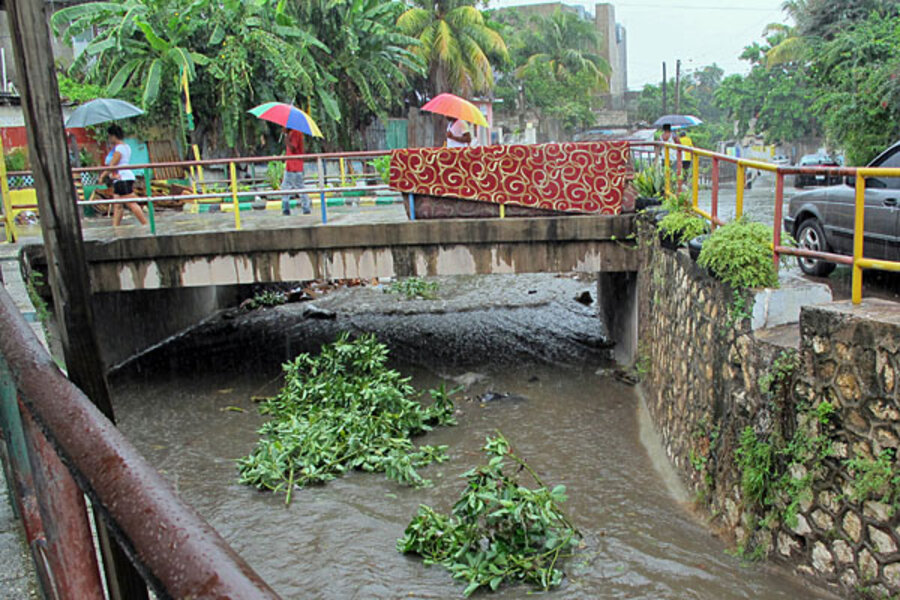Halloween scare? Hurricane Sandy shows similarities to 'perfect storm.'
Loading...
| New York
Weather forecasters are keeping their eye on hurricane Sandy, which could potentially affect residents from Florida to northern New England.
Although the forecasters caution that the computer models are still divided over the future path of the storm, in a worst-case scenario the US will get hit with a storm that will be bring back memories of the “perfect storm” that hammered the US in Halloween 1991.
“The weather system could have some similarities to the perfect storm,” says Paul Walker, senior meteorologist at AccuWeather.com in State College, Pa. “I’m not quite sure if it will be that bad.”
The perfect storm resulted in widespread flooding as 30-foot waves raked seaside communities. Thirteen people lost their lives and damage was in the hundreds of millions of dollars. A Hollywood movie, “The Perfect Storm,” chronicled the storm and its impact on a fishing boat, the Andrea Gail, which sank offshore.
At the moment, the National Hurricane Center reports Sandy is south of Jamaica with 80 mile per hour winds. It is expected to cross Jamaica and then Cuba early Thursday morning. It will then move north through the Bahamas as a strong tropical storm, predicts Dennis Feltgen, a spokesman for the NHC in Miami.
“At that point the tropical force wind field will expand to more than 200 miles,” says Mr. Feltgen. “That’s why there is a tropical storm watch along the southeast Florida coast. That watch may have to be expanded northward.”
By late in the week, forecasters expect the storm will be running parallel to the southeast coast, staying well offshore. This is where the computer models diverge.
Some models have the system getting caught up in a westerly airflow. In this scenario, Sandy moves away from the coast and becomes mainly a maritime hazard. If the system moves offshore it will mainly result in some rain in the Northeast early in the week. Halloween may be wet in some communities.
Yet other computer models envision Sandy getting sucked back toward the East Coast. It would no longer be a hurricane but would still have near hurricane force winds.
“You can have hurricane force winds and not have a hurricane,” says Feltgen. “There can be some powerful nor’easters.”
In a worst-case scenario, there could be travel disruptions early in the week from southeast Virginia all the way to New England, says Mr. Walker. Because the winds could be driving large seas in from the ocean, coastal areas could experience flooding.
If the storm does head inland, the computer models show it slowing down. This could potentially result in a lot of flooding.
In addition, some of the computer forecasts predict snow in the mountains of western Pennsylvania up to western New York state.
“A high pressure zone building on the back of this would funnel down cold air from James Bay onto the back side of this system,” says Walker.
Last October, a snowstorm dumped more than a foot of snow in some parts of the Northeast causing widespread power outages since the trees still had their leaves. Walker says this is not likely to happen this time since it will be warm along the coast.
It is not unusual to get hurricanes this late in the season. “We typically get two in October,” says Feltgen. In fact, every November since 2007 there has been a tropical storm or hurricane.
“So we are not out of the woods yet,” says Feltgen.
In fact, even if Sandy goes out to sea, Walker says some computer models envision yet another nor’easter forming at the end of next week. “We will just have to wait and see,” he says.







